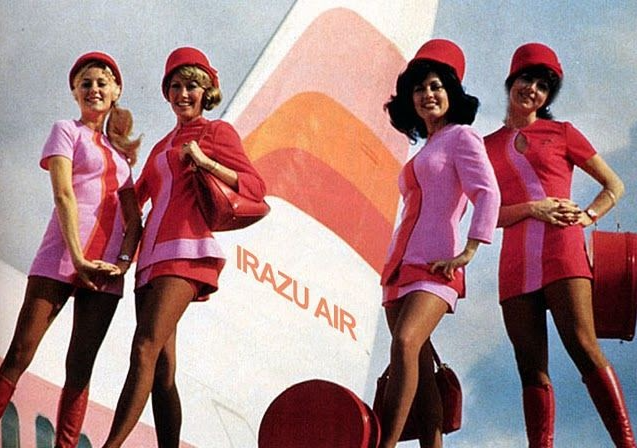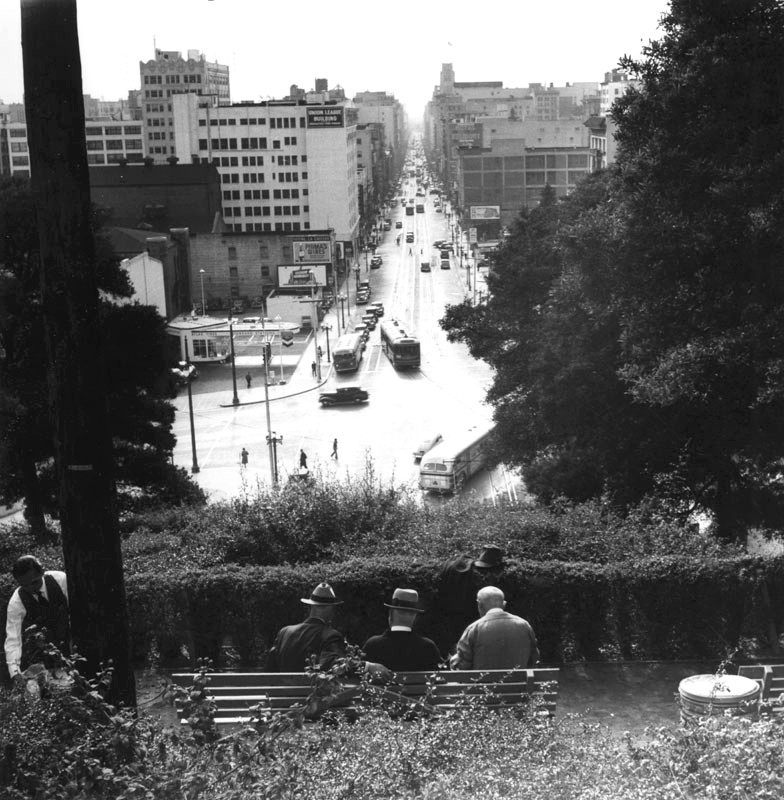
This collection of impressive photos captures the street scenes and everyday life of Los Angeles in the 1930s. Most of the pictures were taken by Ansel Adams which commissioned to document the city’s industry as the country was shoring up its air power.
Many of his photographs focused on the lunchtime rituals of factory workers along with everyday street scenes he encountered as he ambled about the rapidly developing region.
Adams visited a bowling alley, a forest of oil derricks, and a trailer park, one of many that popped up to meet a fierce demand among the workers for temporary housing. But only a handful of Adams’ images were published by Fortune magazine.
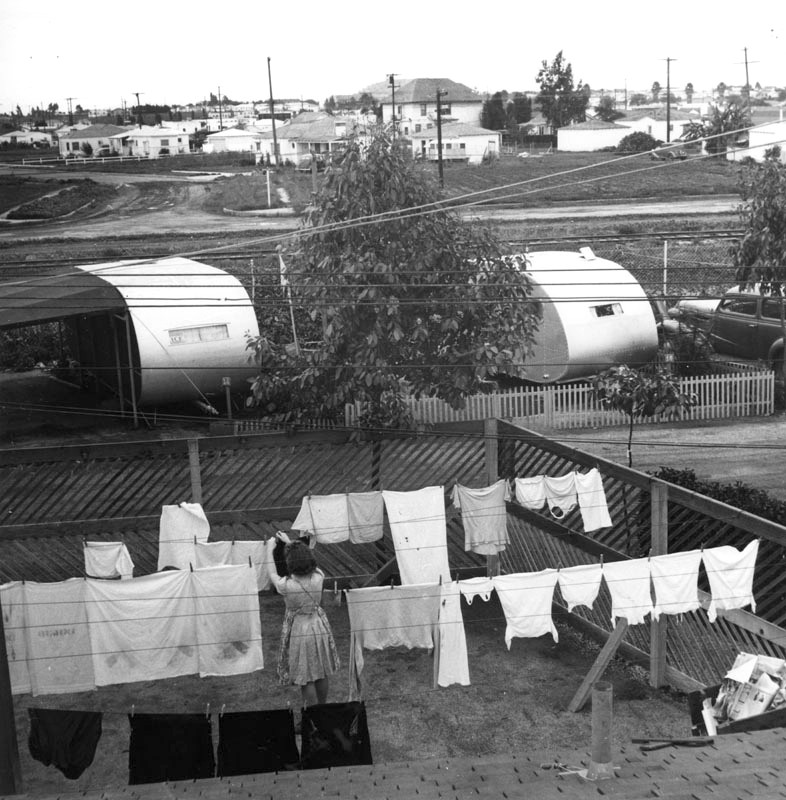
Hanging laundry at Olympic Trailer Court on the border of Santa Monica and West Los Angeles, circa 1940.
Historian Carey McWilliams wrote that Los Angeles’s growth is “one continuous boom punctuated at intervals by major explosions.”
By 1920 southern California’s population had surpassed that of northern California, and in the next several years Los Angeles experienced “the largest internal migration in the history of the American people.”
Hundreds of thousands of people arrived by automobile. It was a frenzied period of wildcat oil drilling, intense business speculation, religious excitement, extensive suburban development, the birth of the aircraft and film industries, and civic corruption.
The charismatic Pentecostal minister Aimee Semple McPherson captivated audiences with her dramatic preaching. Droves of starry-eyed young people arrived hoping to follow in the footsteps of such movie actors as Mary Pickford, “America’s Sweetheart,” and her daredevil husband, Douglas Fairbanks.

Workers at Lockheed’s Burbank plant gathered on their lunch break.
Los Angeles was very much a white-dominated town in the 1930s. Housing and public facilities were segregated, and job discrimination was widespread.
The Great Depression caused high unemployment in the region and exhausted the resources of private and public assistance.
To slash welfare lists, public officials repatriated thousands of Mexicans—and their U.S.-born children. Amid this dire situation, Los Angeles built facilities for and hosted the 1932 Olympic Summer Games as planned.
The city’s remoteness from Europe and from much of the rest of the world contributed to reduced international participation.
Nevertheless, the Games were a great success and showcased Los Angeles to the world. Meanwhile, the corruption in City Hall led to a recall movement against Mayor Frank L. Shaw and his close associates.
Police misconduct and the mayor’s mishandling of public funds forced Shaw from office and led to the election of reform mayor Fletcher Bowron in 1938.
Economic recovery was relatively swift in the late 1930s owing to the prosperity of the film industry, the tapping of electrical energy from Hoover Dam, and the production of airplanes for Britain and France at the outset of World War II.

A young girl outside a market at Olympic Trailer Court.
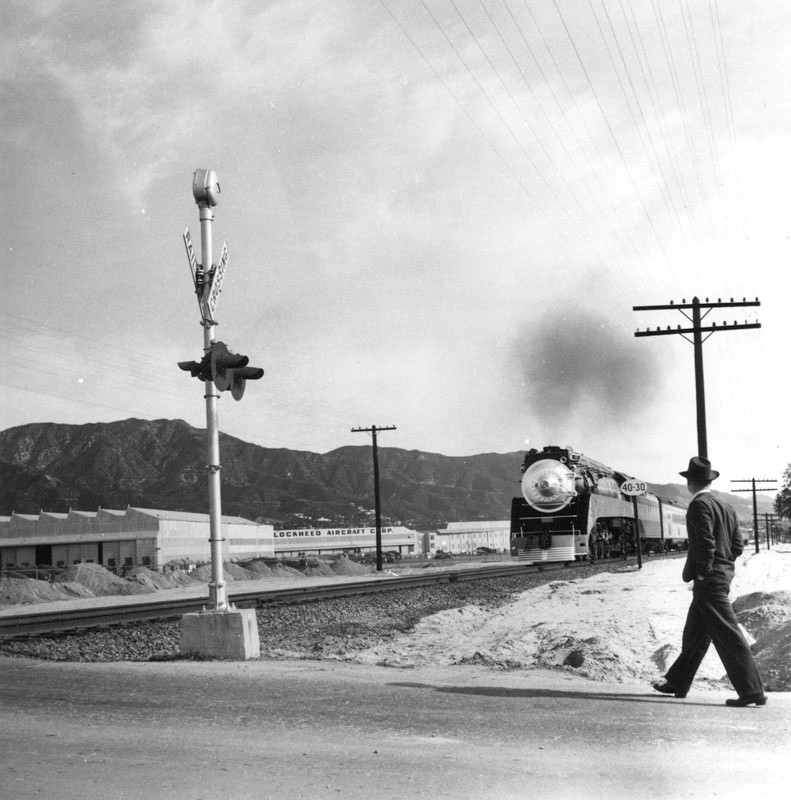
A man on an unidentified street in Burbank. In the distance is a Lockheed plant.
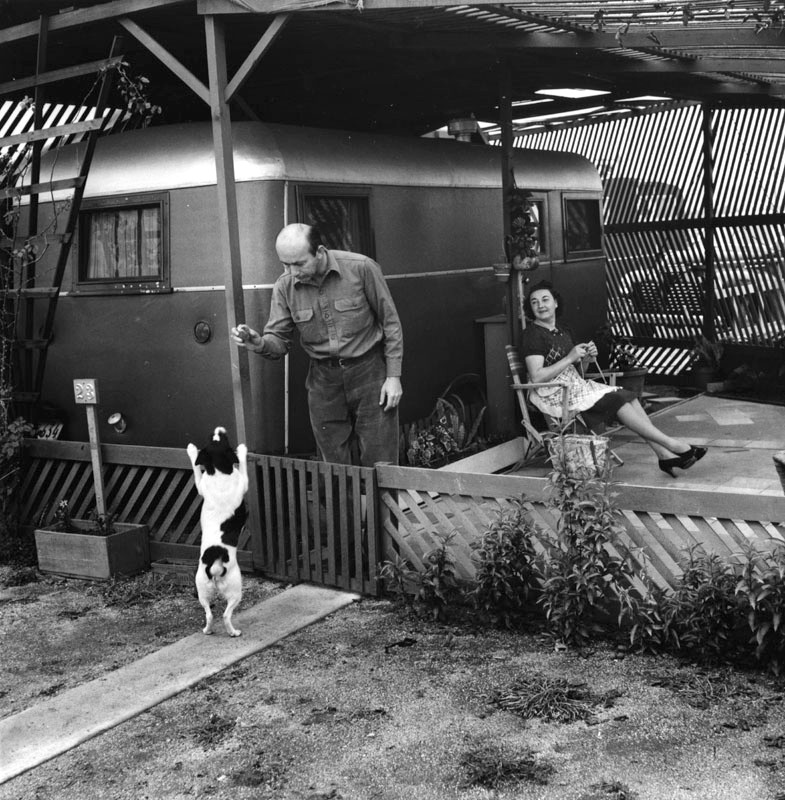
Residents at Olympic Trailer Court. A booming defense industry fueled fierce demand for temporary housing.
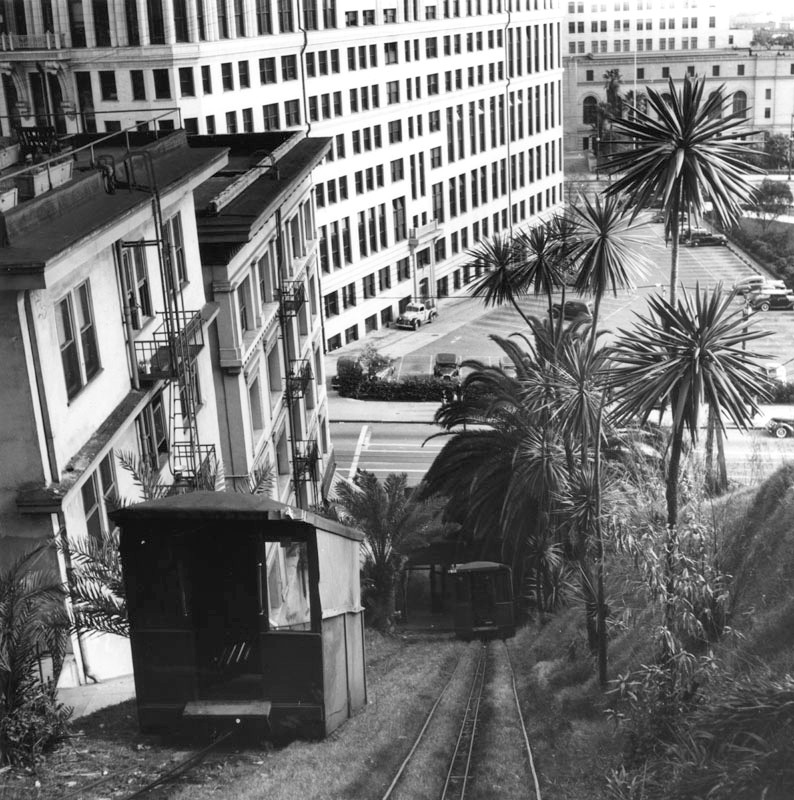
The Court Flight railway took passengers up and down a steep incline in downtown Los Angeles.
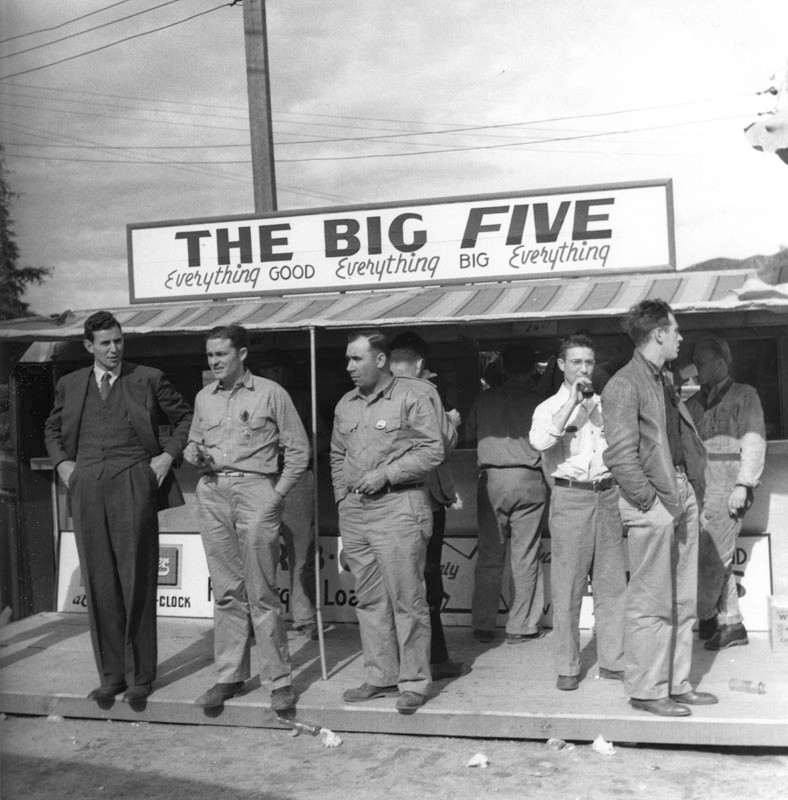
Douglas Aircraft Company workers on their lunch break in Santa Monica.
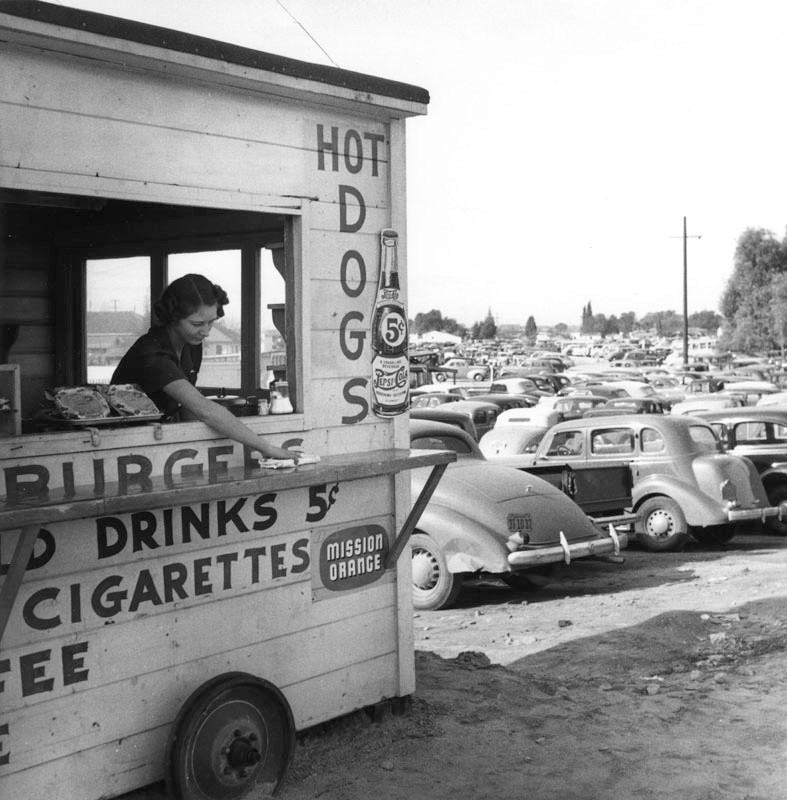
A woman wiped off the counter of a lunch stand near an aircraft plant in the Los Angeles area.
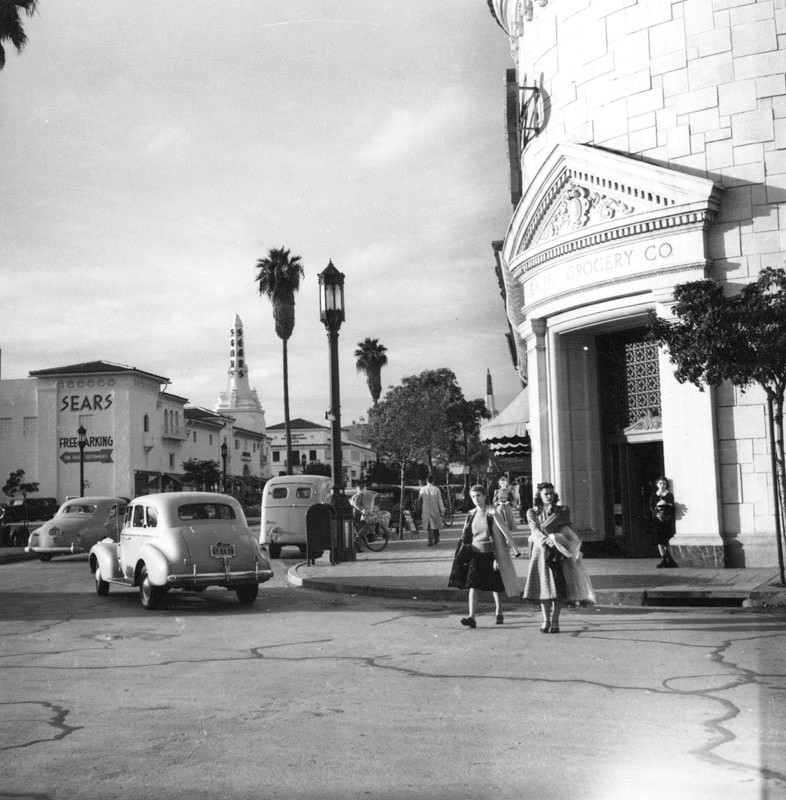
Shoppers on Lindbrook Drive in Westwood Village, home to a Sears and Ralphs supermarket.

An oil field covered with derricks in an unidentified area of Los Angeles.
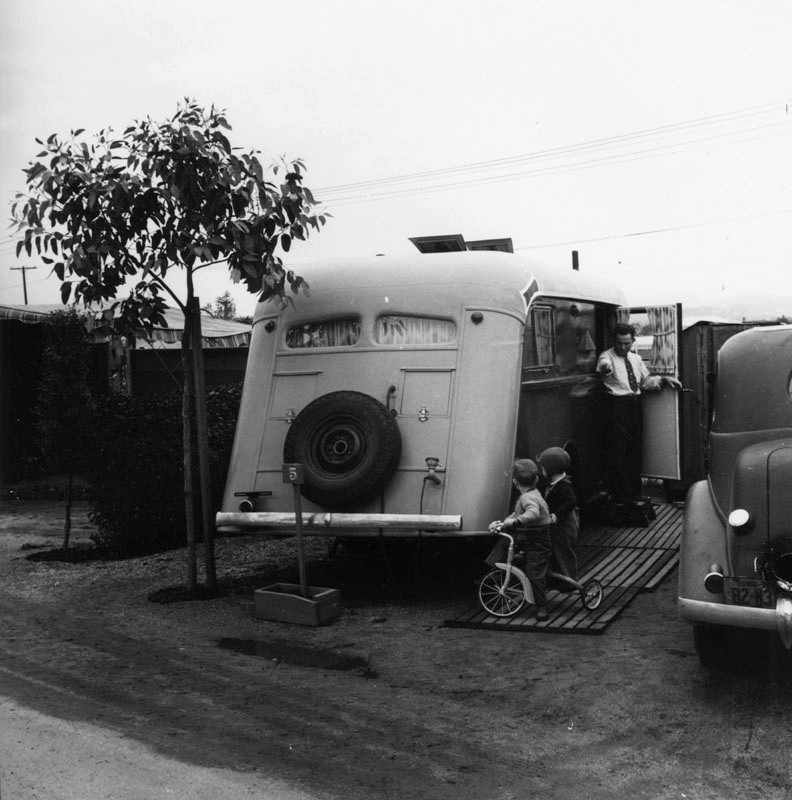
A father talks to his two young sons at Olympic Trailer Court. Homes in the area now go for no less than $1 million, according to Zillow.
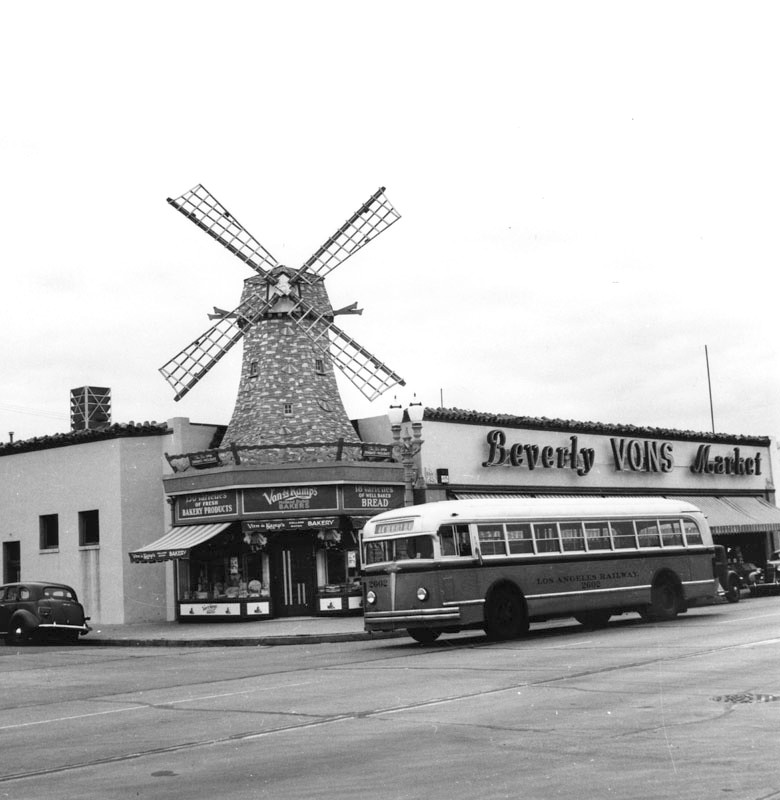
A Los Angeles Railway bus traveled through Los Angeles.
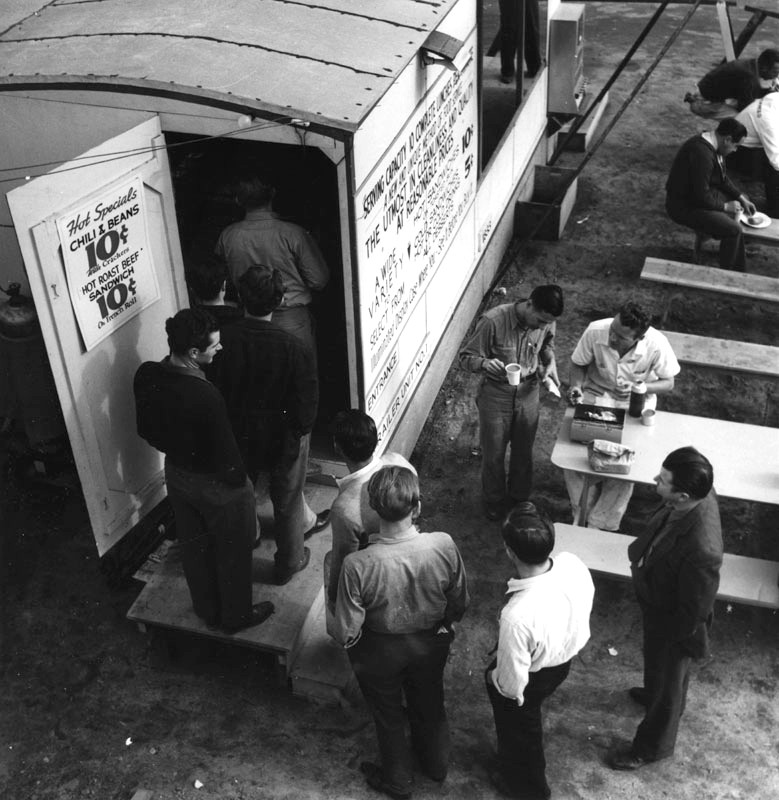
Lockheed workers in Burbank lined up to buy lunch.
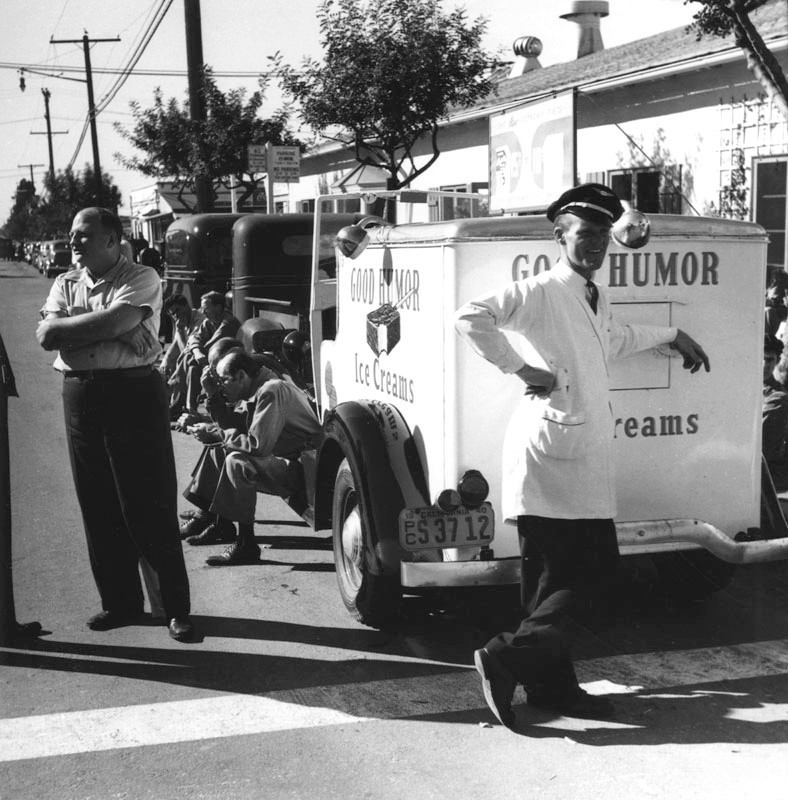
An ice cream vendor looked for customers near the Douglas Aircraft Company plant in Santa Monica.
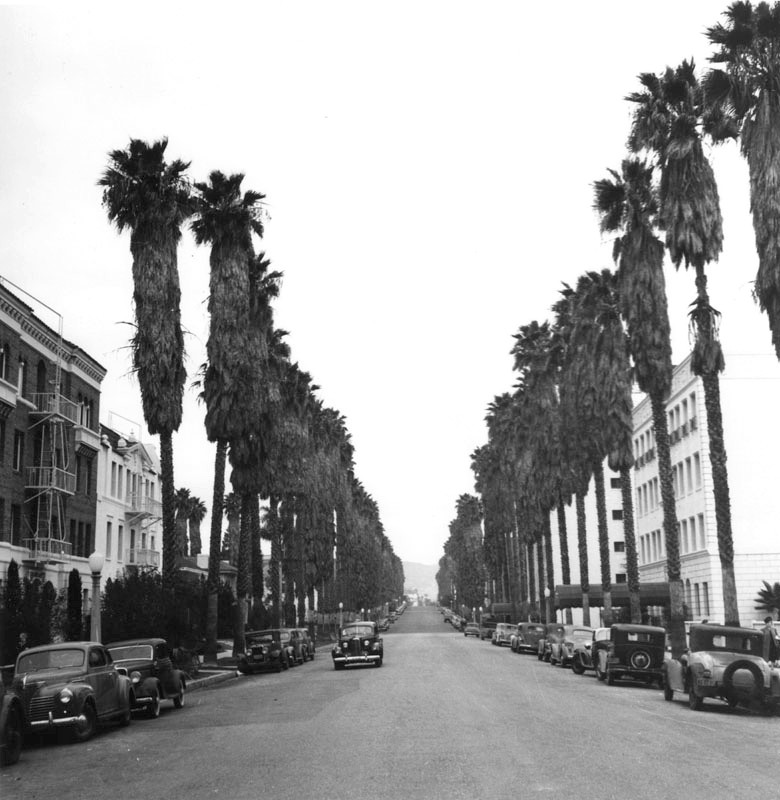
The palm-lined South Kenmore Avenue in Los Angeles.
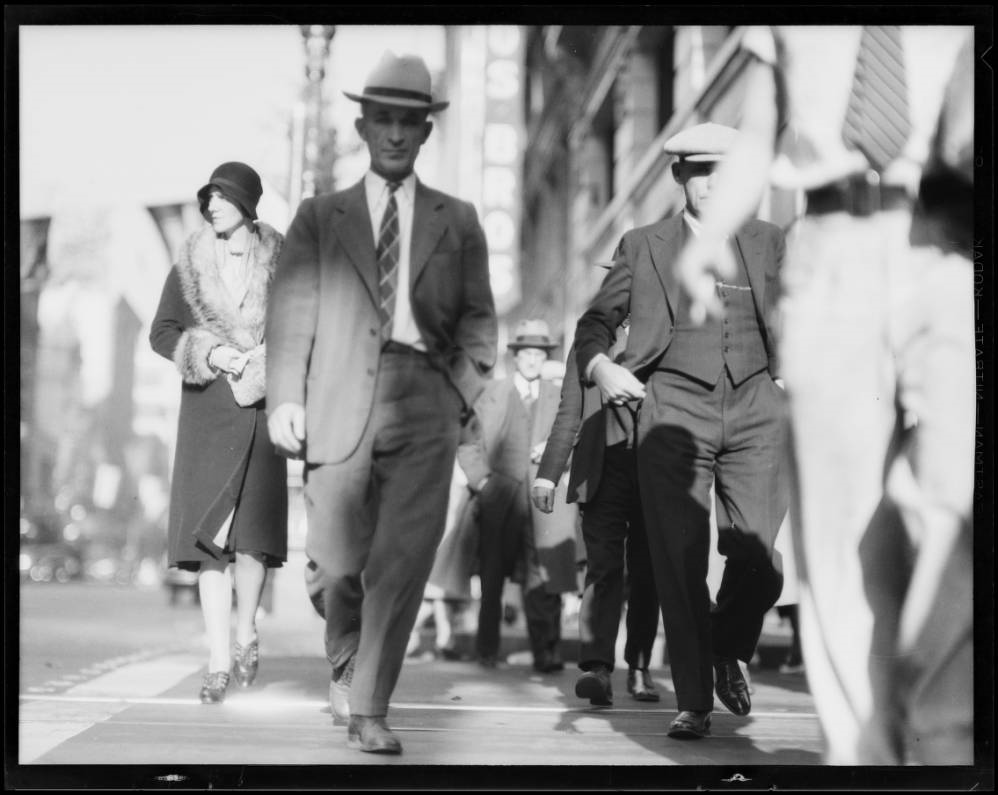
Crowds at Broadway and 7th Street, Los Angeles, CA, 1930
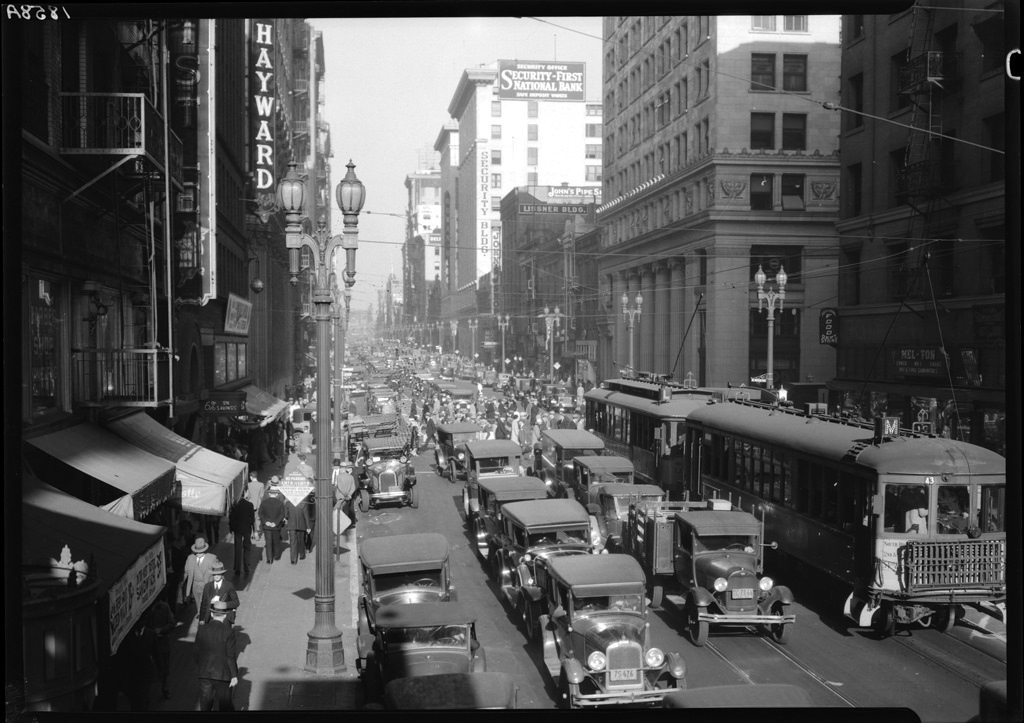
Traffic at Seventh and Spring, 1930
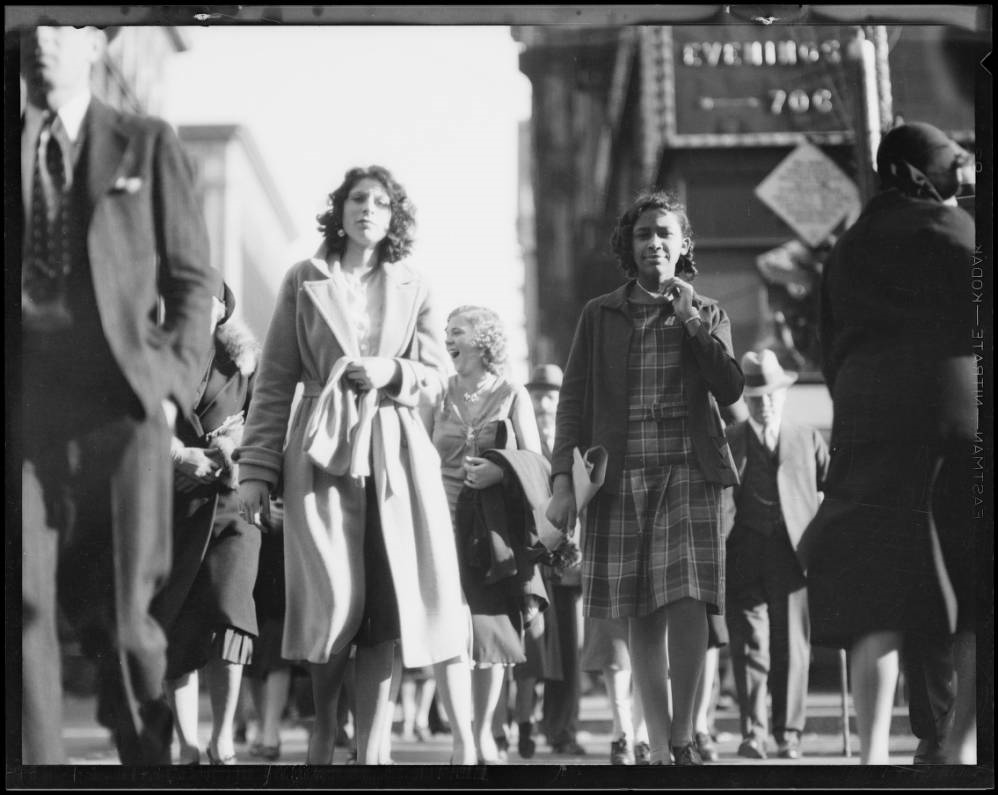
Crowds at Broadway and 7th Street, Los Angeles, 1930
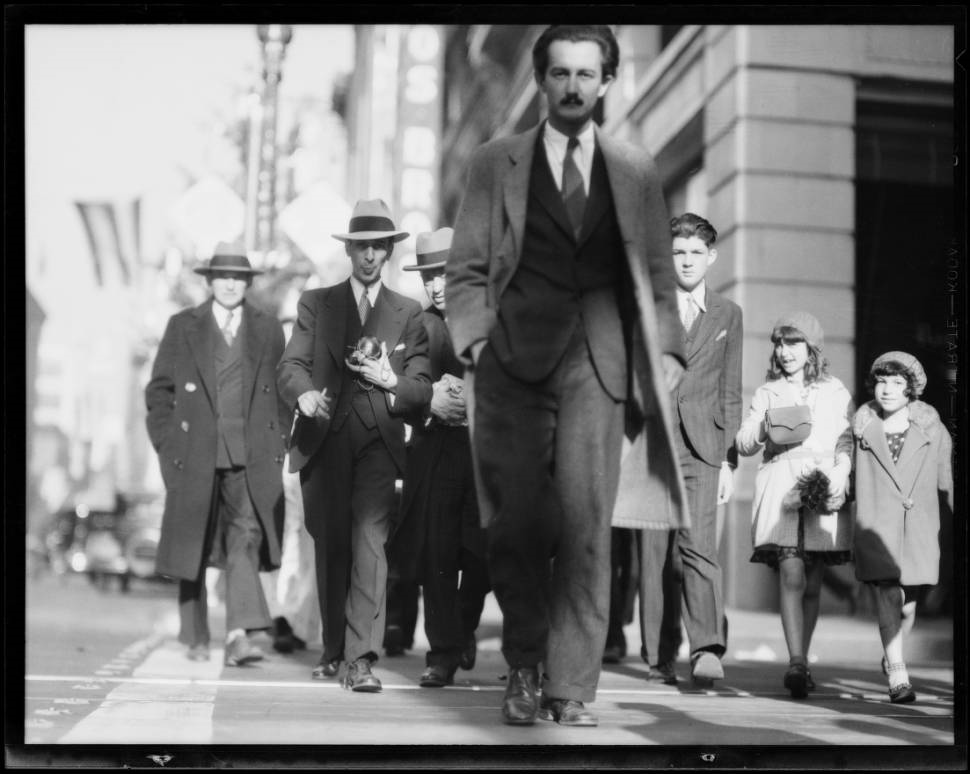
Crowds at Broadway and 7th Street, Los Angeles, 1930
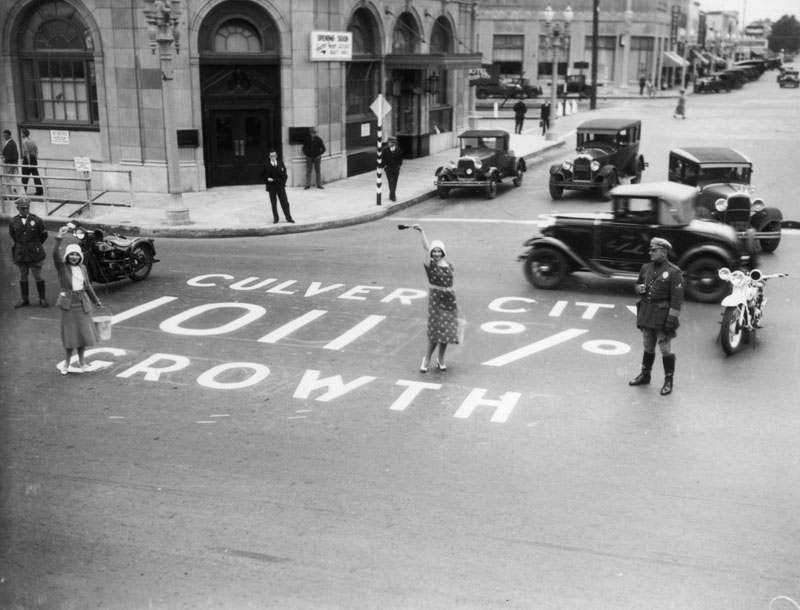
Culver City boosterism, 1930
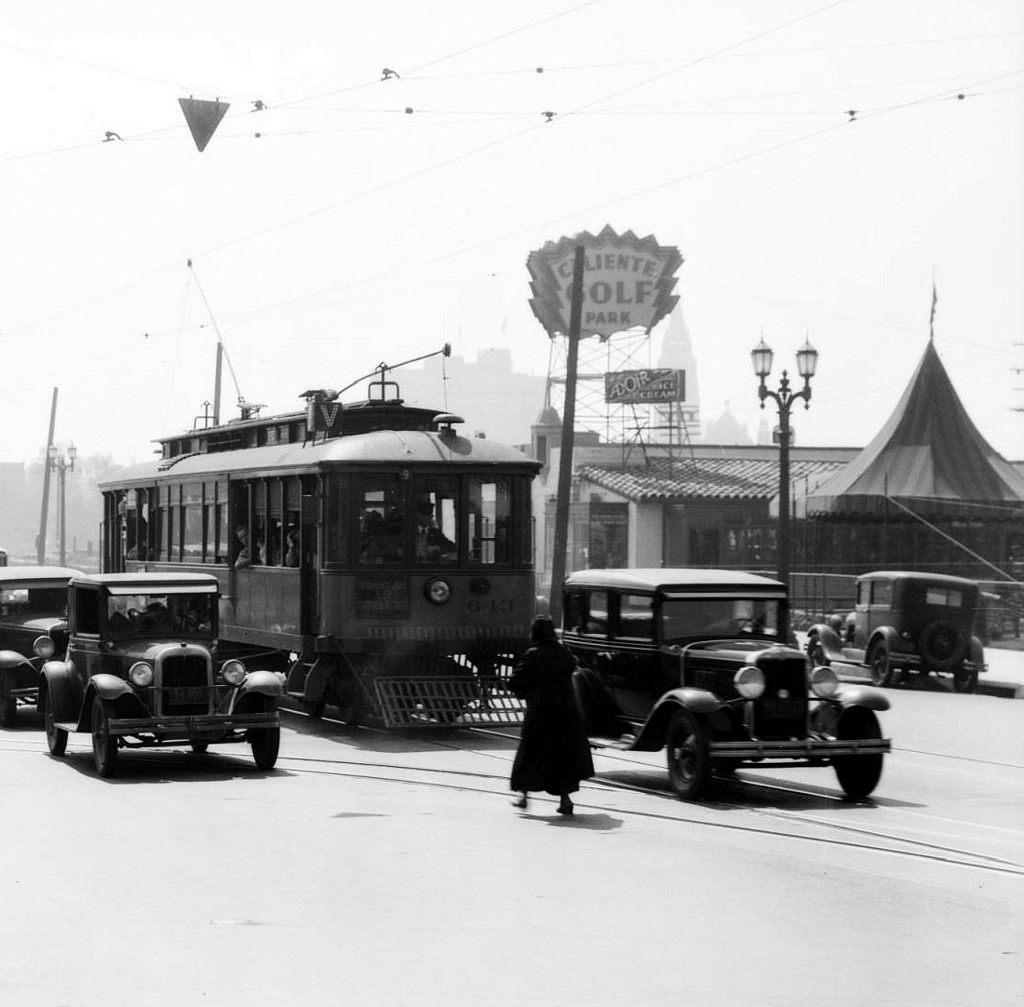
Caliente Golf Park, 4th Street and Vermont Avenue, 1931
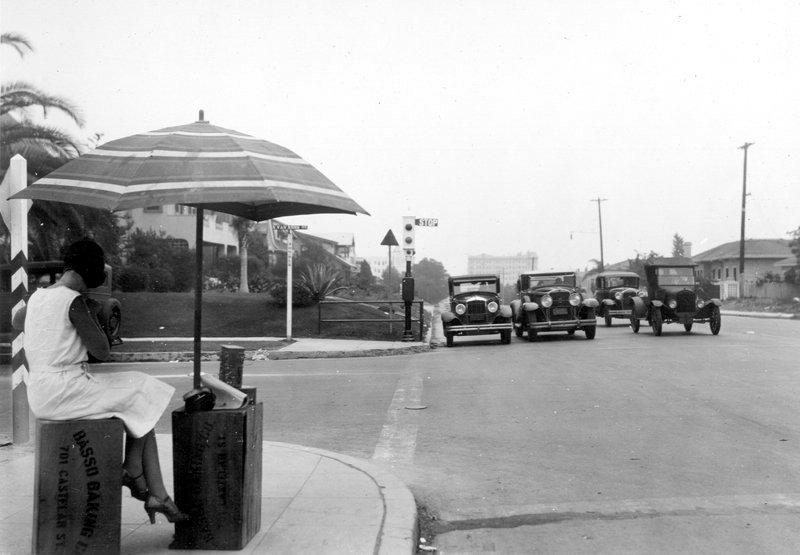
Girl waiting for bus on Beverly Boulevard, interesection at Van Ness, July 17, 1931
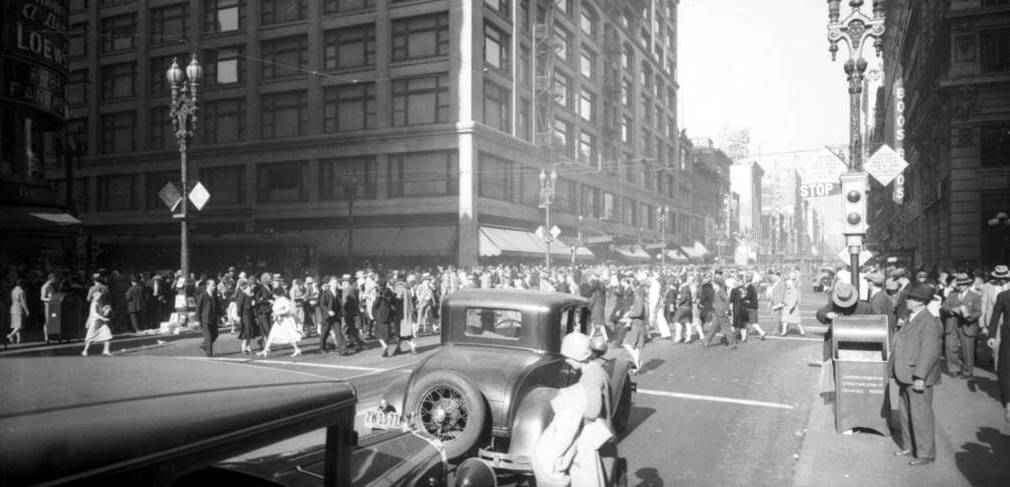
Looking north on Broadway at 7th Street, 1931

Looking south on Broadway from 4th Street, 1931
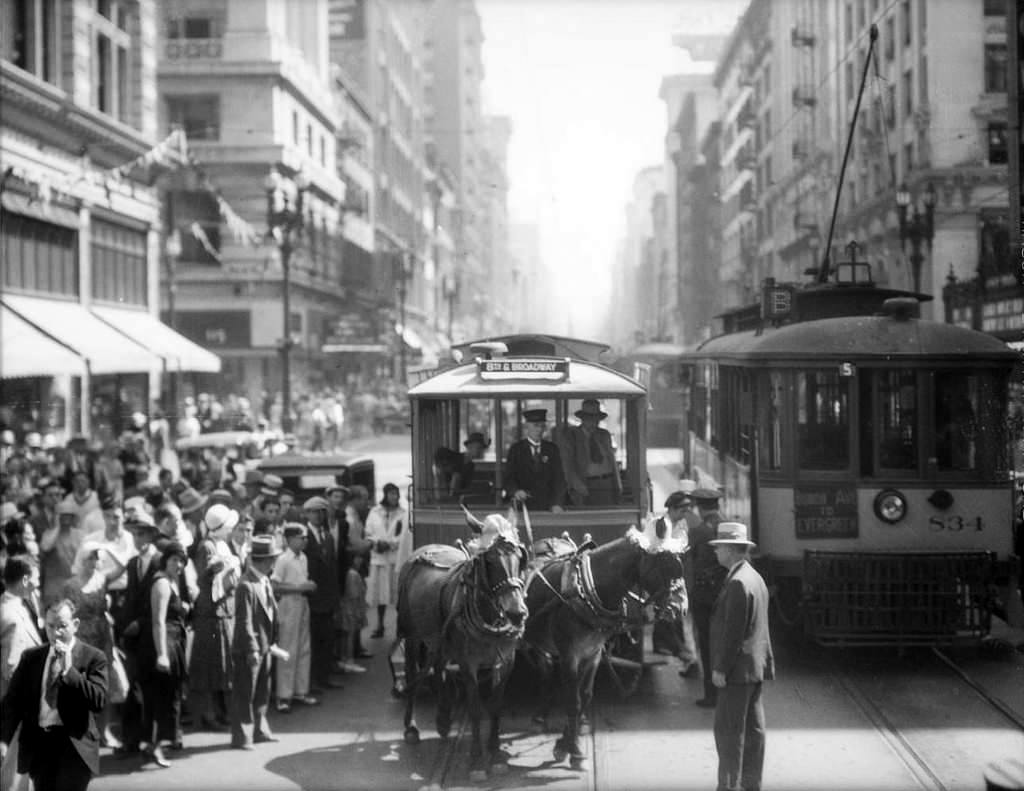
May Company Department Store golden jubilee, 8th Street and Broadway, 1931

Traffic on Wilshire Boulevard, Los Angeles, 1931
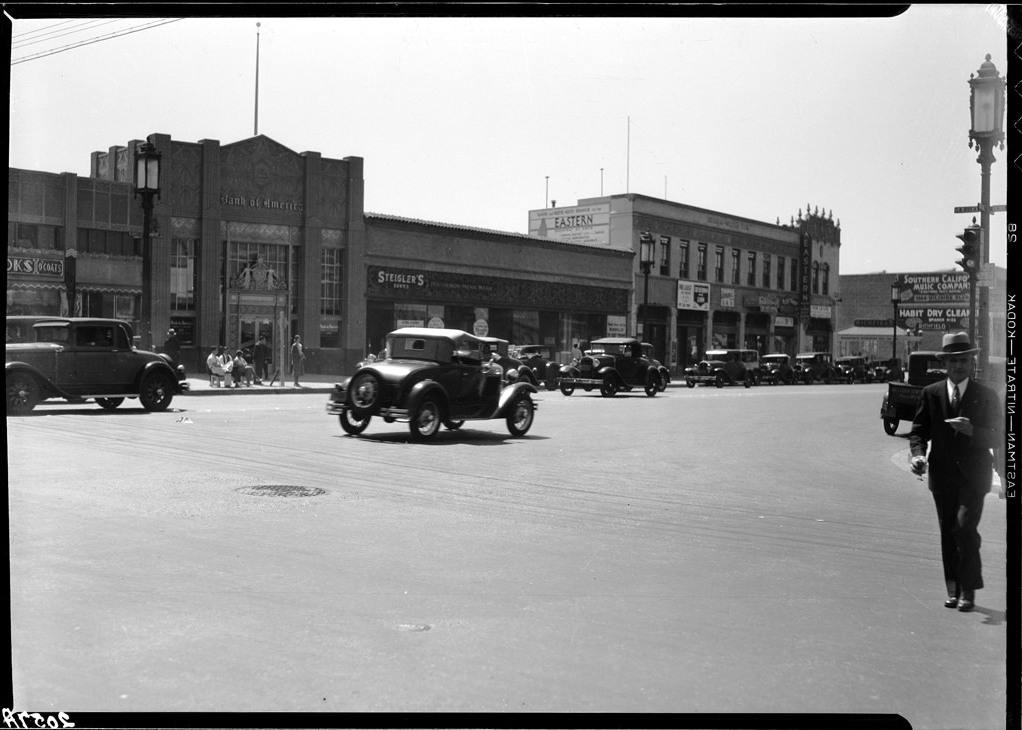
Traffic on Wilshire Blvd., 1932

Morgan Hotel shown at 629 W. 8th Street, 1932
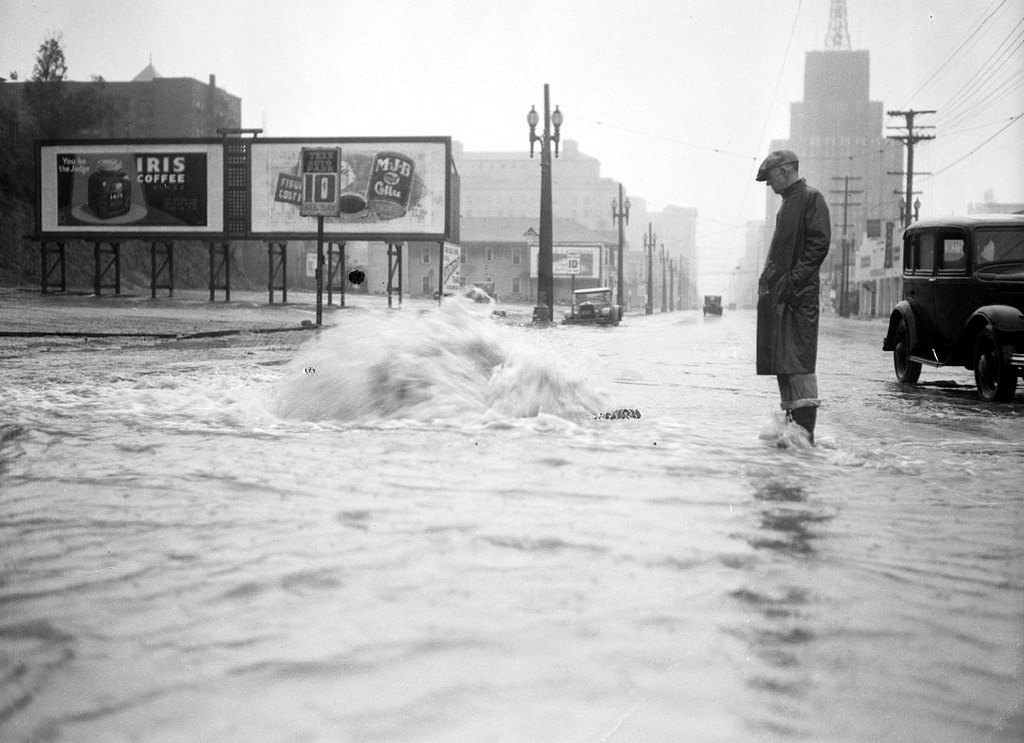
Looking south on Flower Street at 4th, 1933
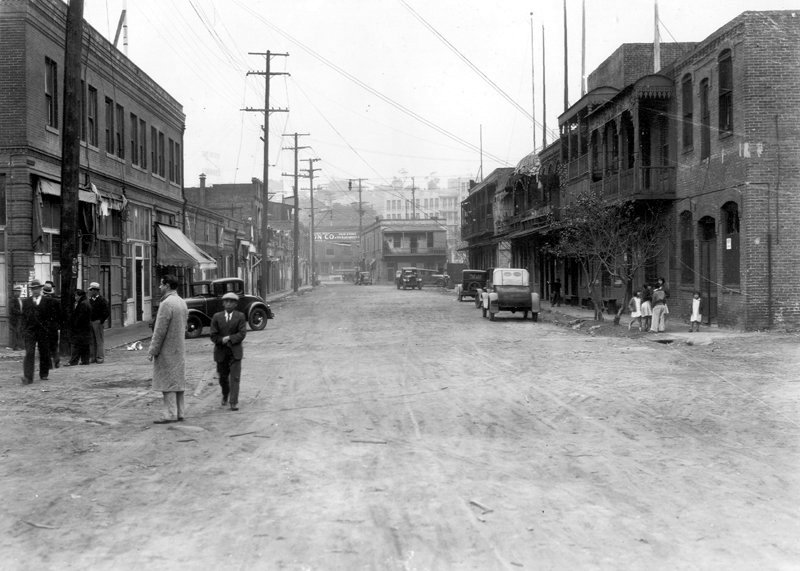
Looking west on Apablasa from Juan Street, 1933
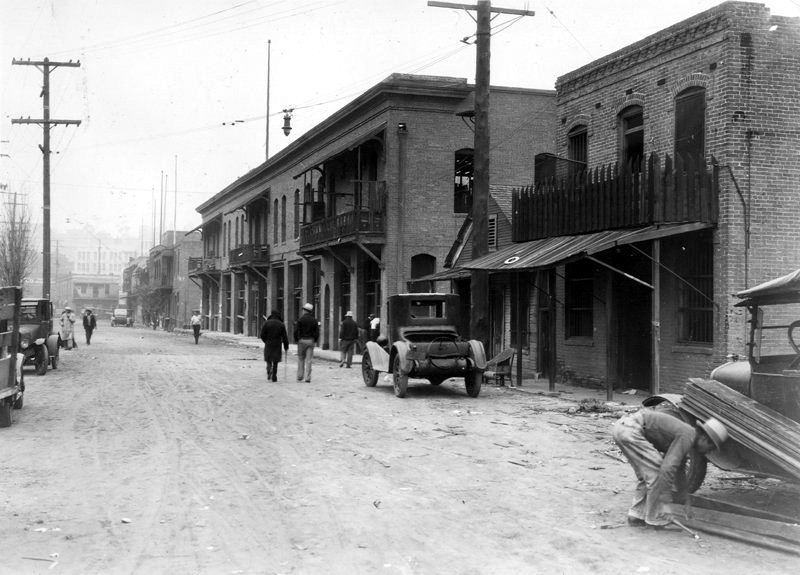
Looking west on Apablasa Street from Juan Street, 1933
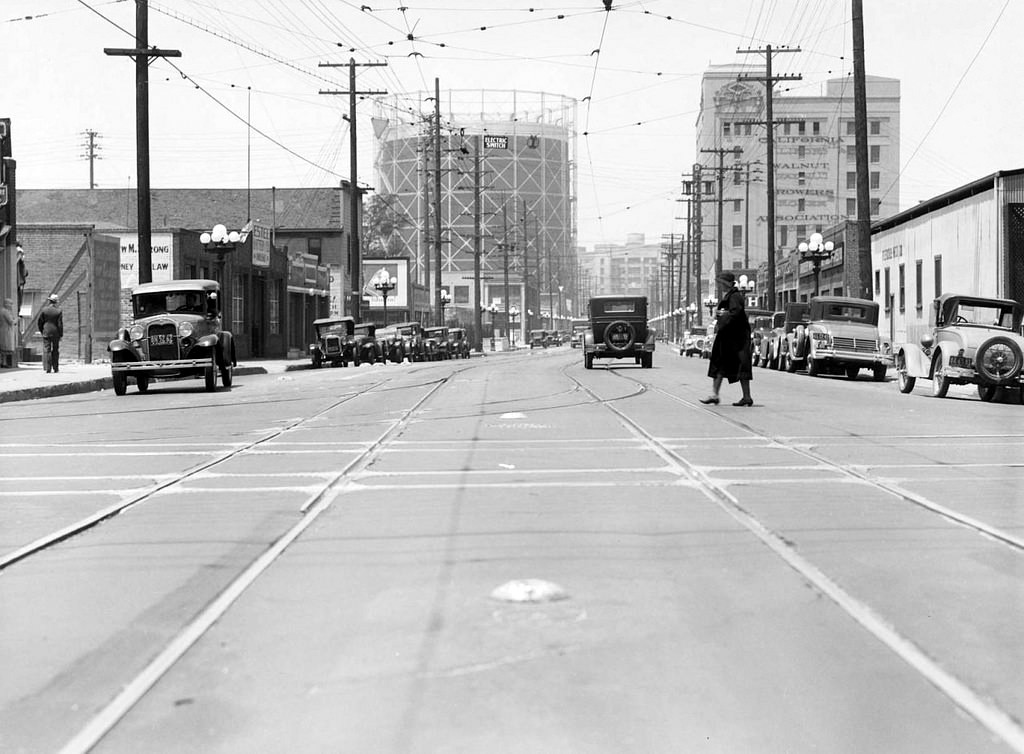
Looking west on east 7th at Mateo Street, 1933

Looking east on 1st Street from Broadway, 1934
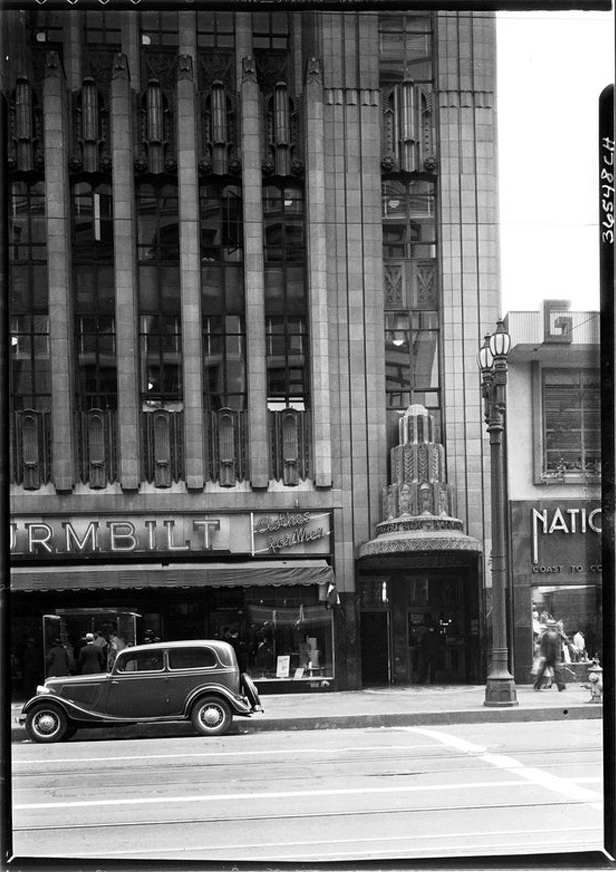
Bankers Building on Hill Street, 1935
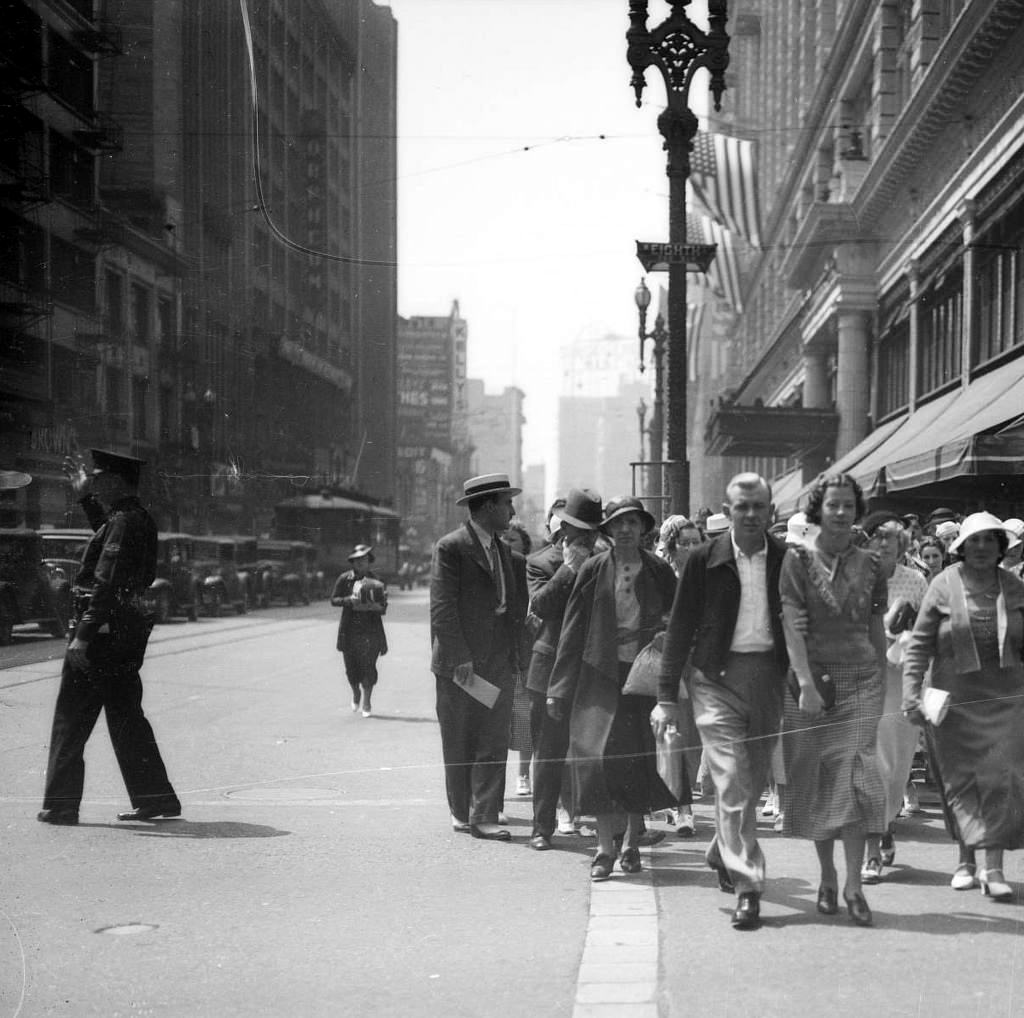
Looking south on Broadway at 8th Street, 1935
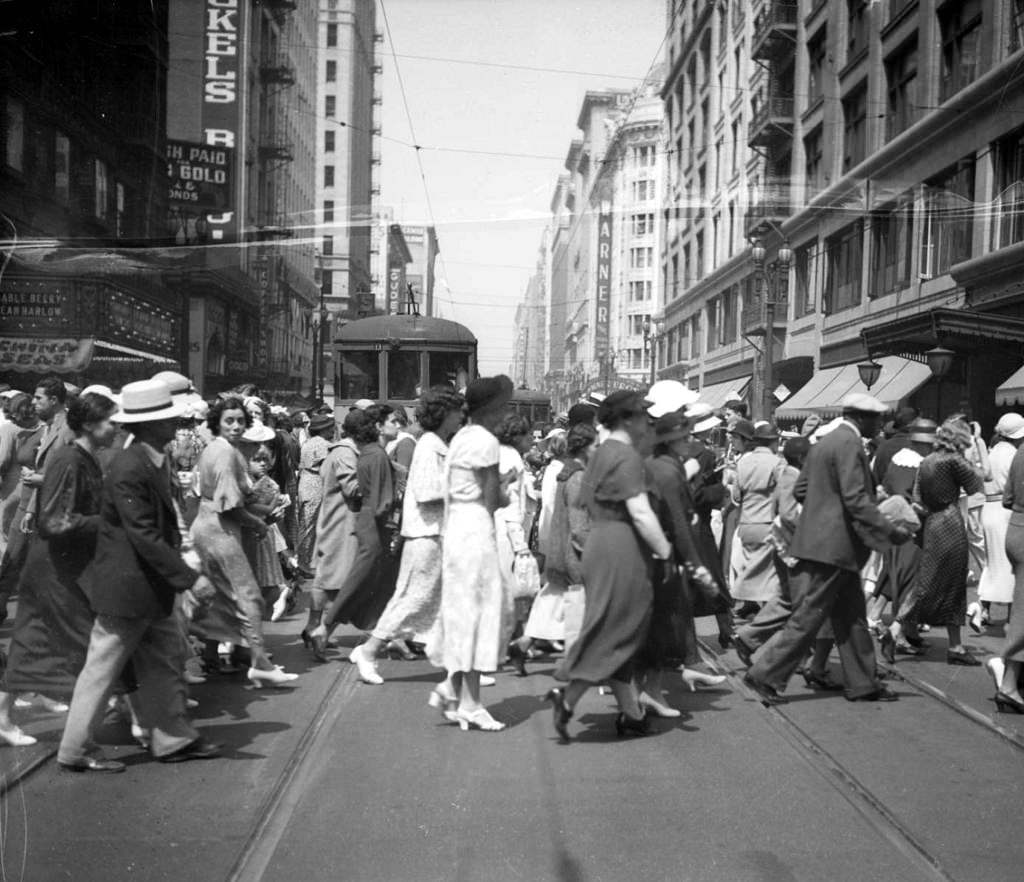
Looking west on 7th Street at Broadway, 1935

Clifton’s Brookdale at 648 S. Broadway, 1936
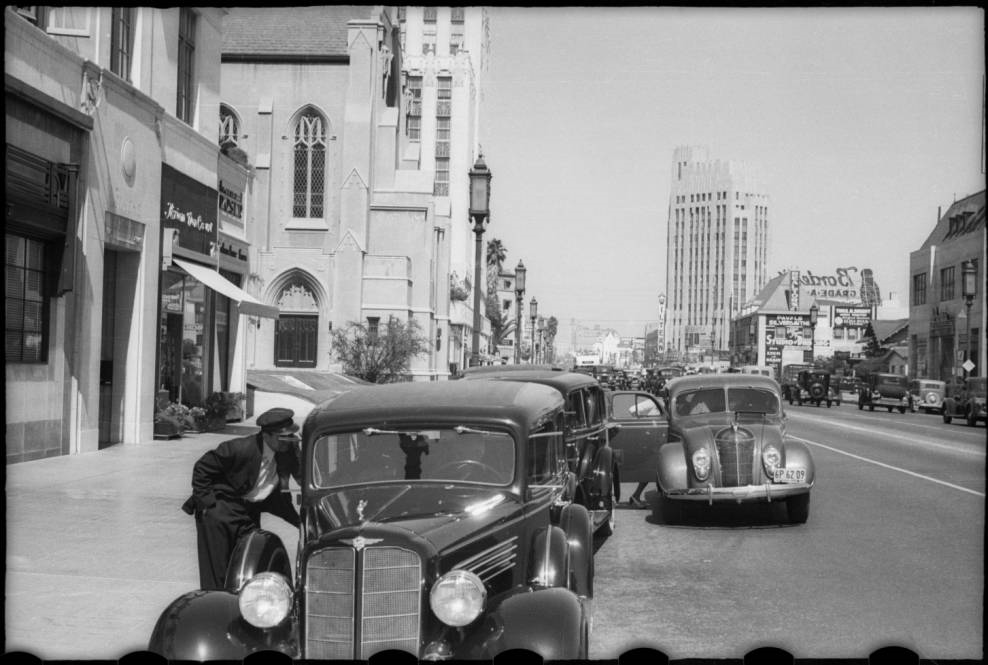
On the Boulevard, Los Angeles, 1936
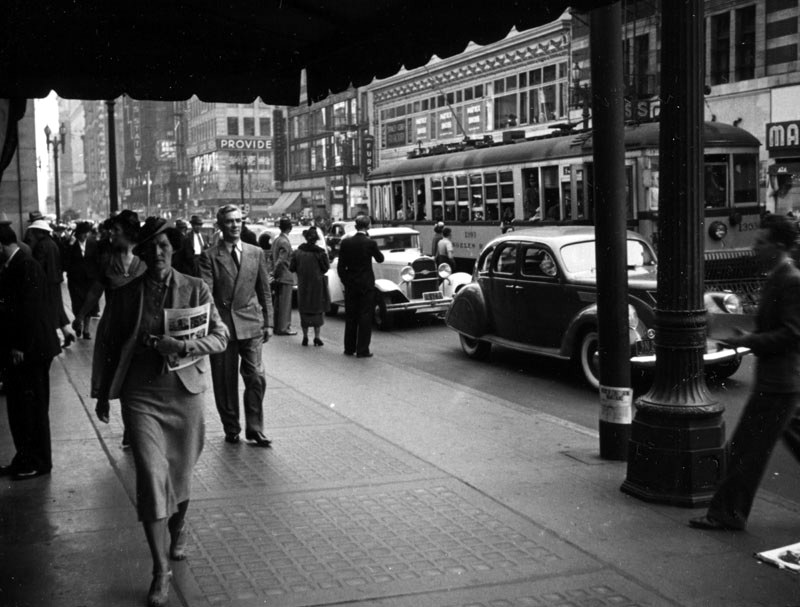
7th and Olive Streets, 1937
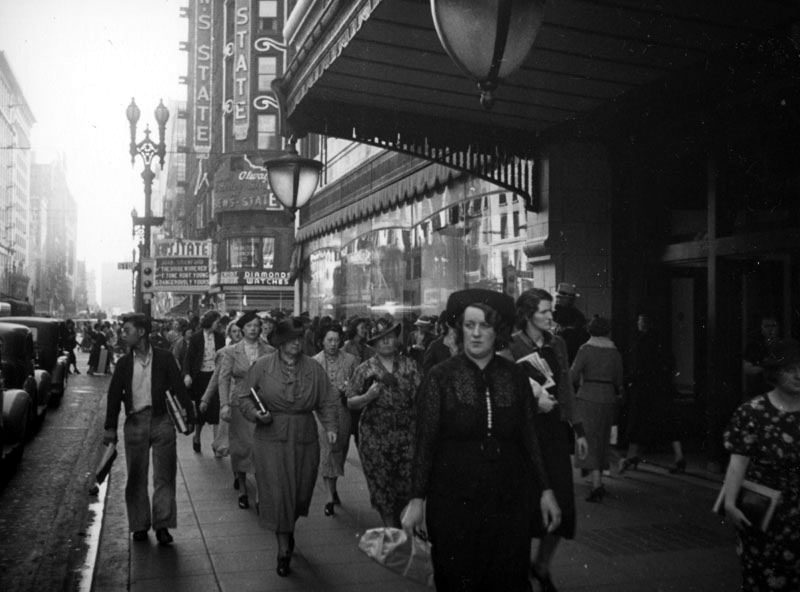
Broadway south at Seventh, 1937
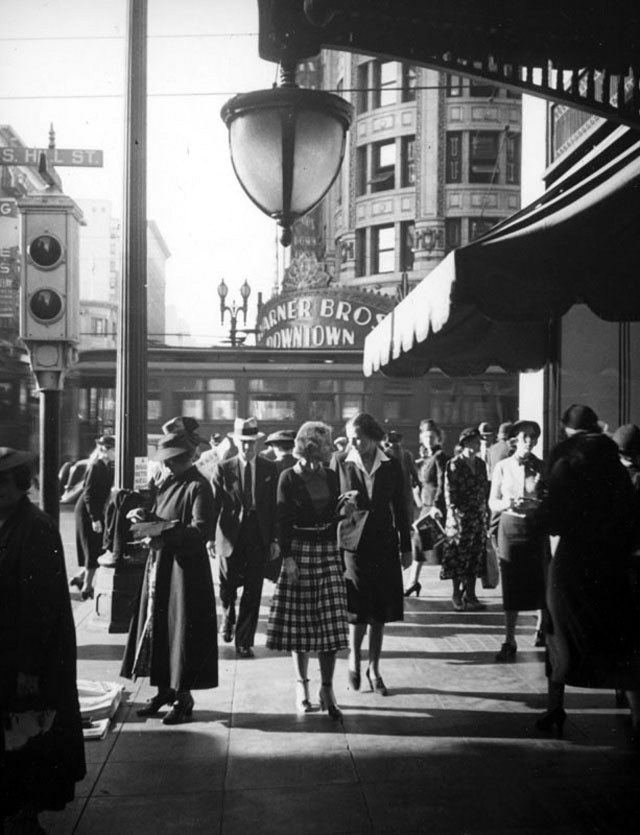
Looking west on 7th Street at Hill, 1937
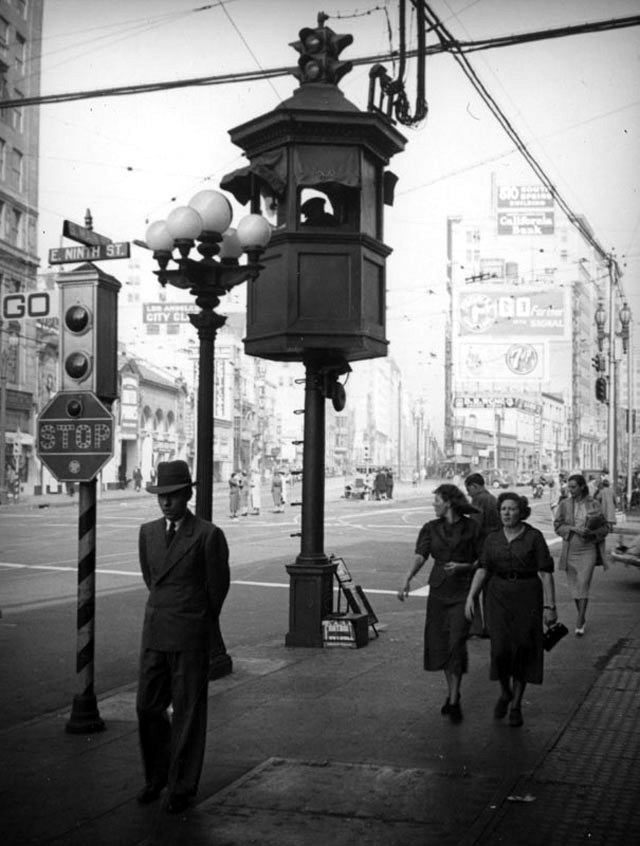
Main at 9th Street, 1937

The Hotel Latour, Hill Street, 1937
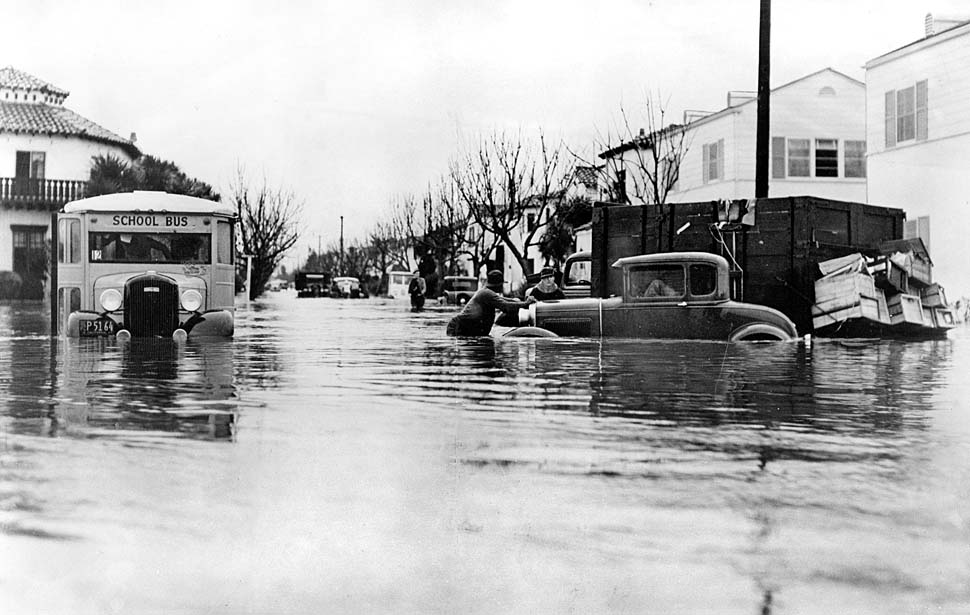
Looking east on W 43rd Place at Garthwaite Avenue, 1938
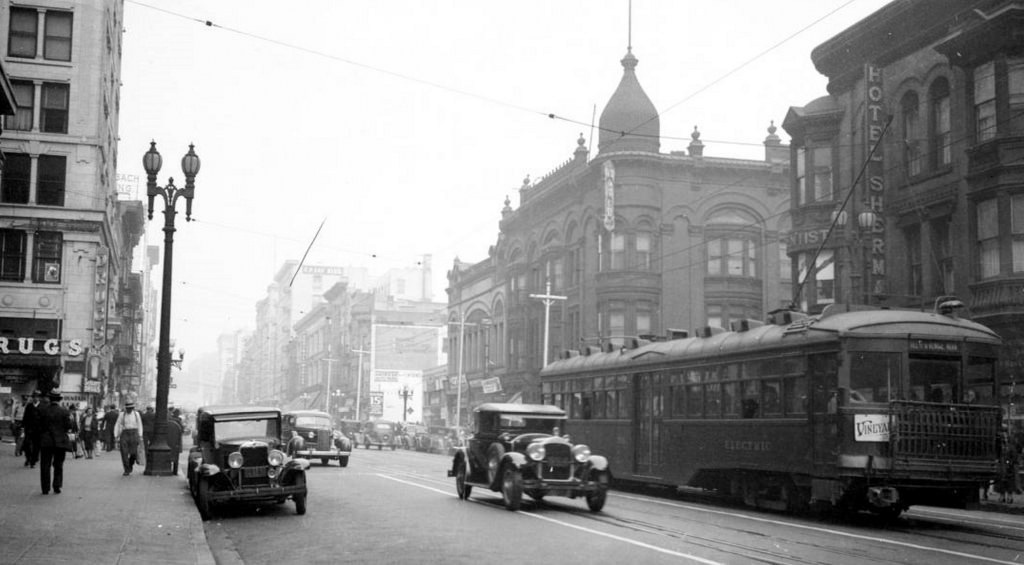
Looking north on Hill Street at 4th, 1938
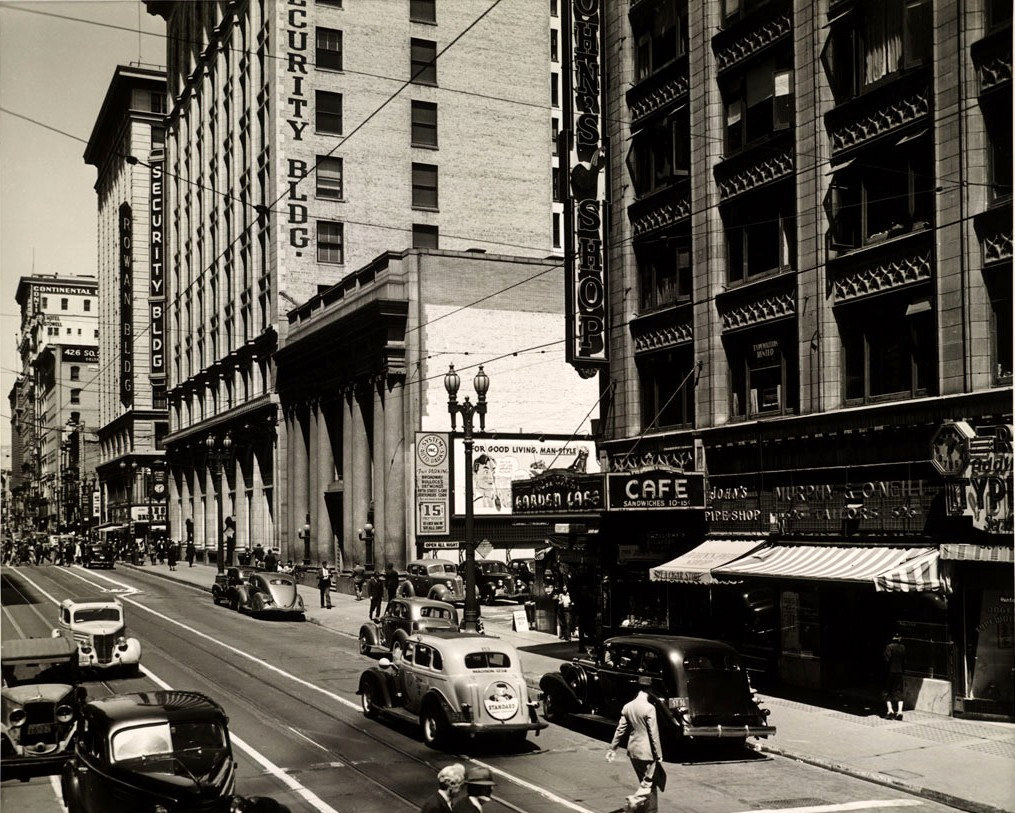
Looking north on Spring Street from 5th, 1938
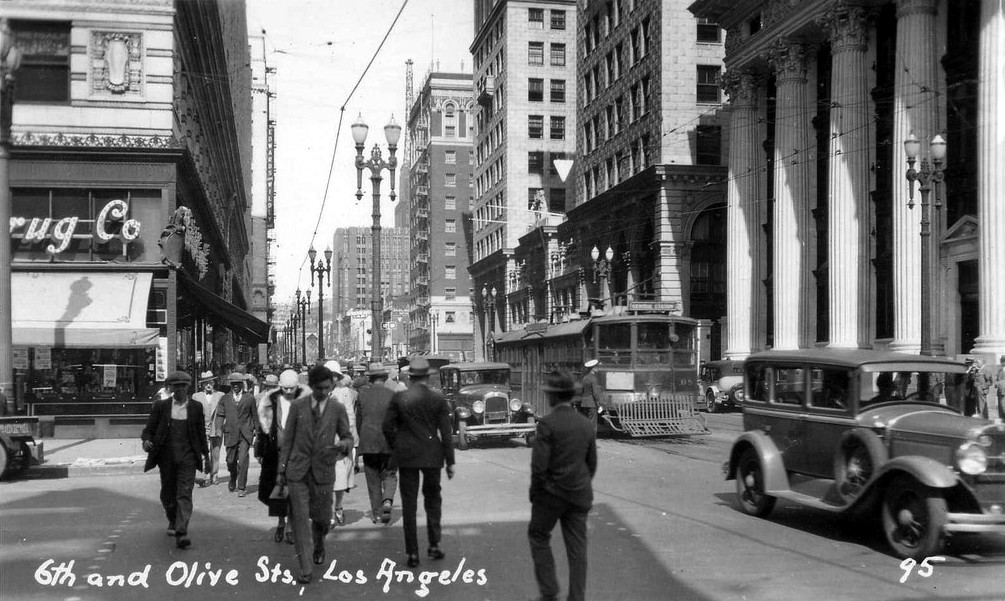
6th and Olive Streets, 1930


